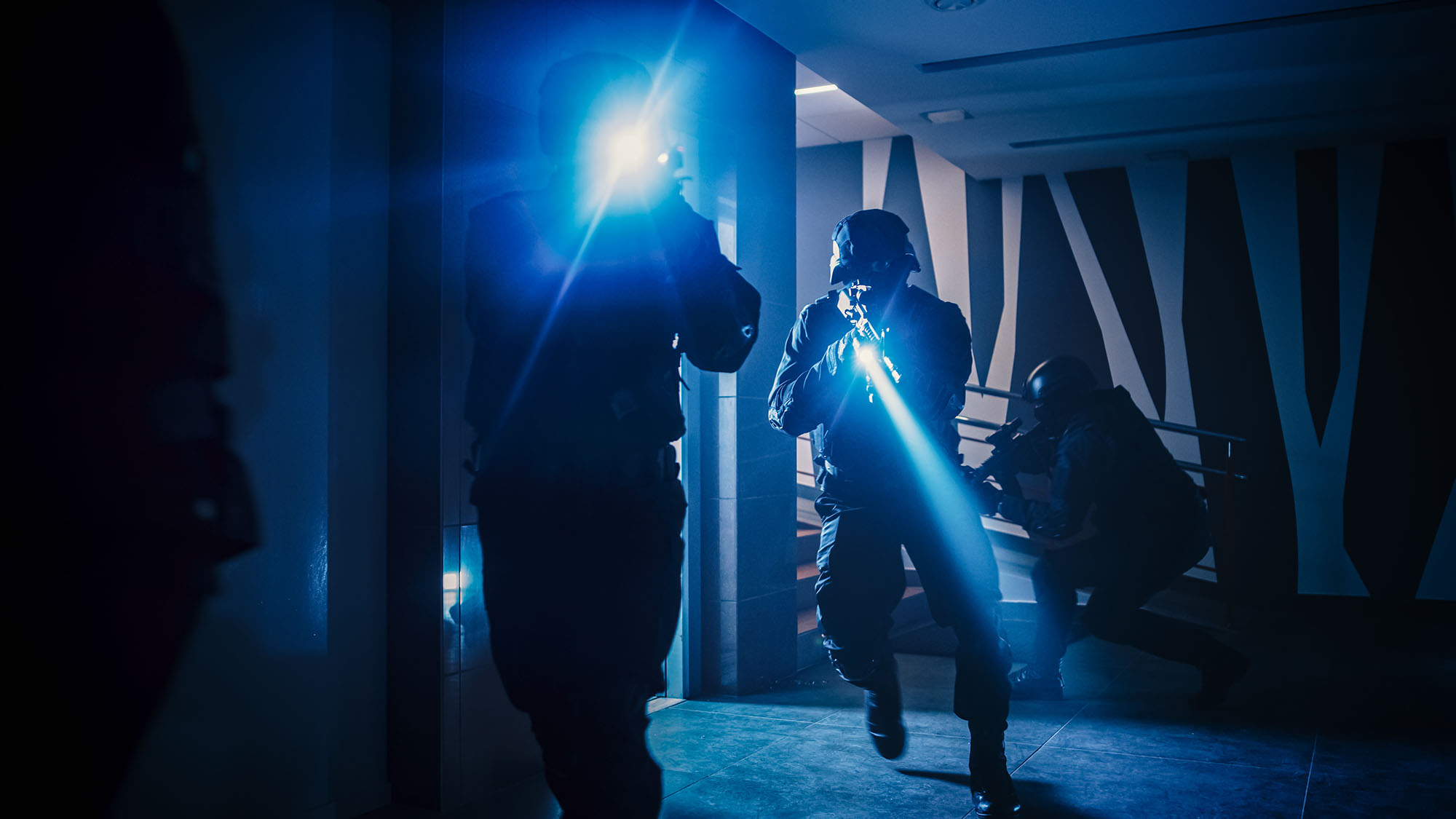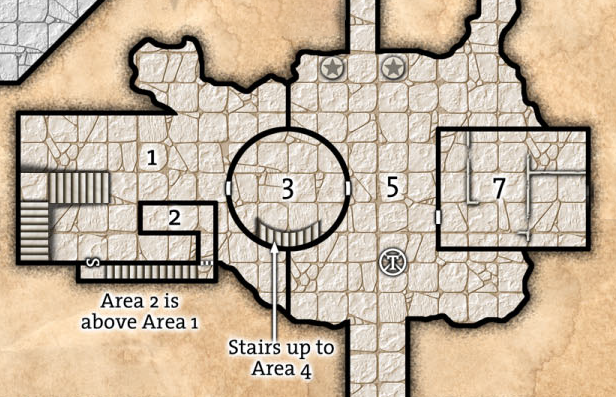DISCUSSING
In the Shadow of the Spire – Session 34C: Back in the Tower Again
Tee slapped Elestra out of her hypnotic trance and then headed for the door.
“Tee! Wait!” Elestra called. “Help me finish off the whatsit!”
The quasit popped out of thin air and raked at Elestra’s throat, sending blood pouring down her chest. It hissed with a sneer. “Don’t call me a whatsit!”
Tor retreated back into the tower. Dominic, having finally freed himself from Ibulli’s web, infused him with a wash of divine energy that closed his wounds and soothed his battered limbs and then sent him back into the fight outside.
Ibulli flew down from above.
“She’s flying now!” Elestra cried. “That’s not fair!”
We’ve previously discussed the value of developing a toolkit of basic tactical techniques as a GM — e.g., in Half Across the River and Hear the Reinforcements. The technique that I’m referring to as an ornate checkpoint is actually one that I first discovered while running this specific adventure designed by Monte Cook.
The basic idea can be seen in Area 3 on the dungeon map:
This tower creates a chokepoint between Area 1 and Area 5. A similar effect, of course, could be created by just having a single door leading directly from Area 1 to Area 5 (as we discussed at greater length in Battles at the Door during the previous session), but in practice, the fact that Area 3 is a distinct liminal space had a profound impact on the complexity of the tactics that both the PCs and NPCs were able to employ.
Meanwhile, below, Tor threw himself against the tower door and burst it open. The inside of the tower was bereft of interior walls with a floor of sandy, hard-packed dirt. A broken staircase wound its way around the inner wall of the tower, up to a trapdoor in the ceiling above.
By the time Tor burst in, Gavele had already crossed the entire tower (with seemingly preternatural speed). Tor and Agnarr raced to catch her, but she managed to wrench open the far door, slip through it, and slam it shut behind her.
The effect was further enhanced by the vertical design of Area 3. This included windows looking out into the other areas, which created unusual multiple access points. The staircase and webs also made Area 3 an interesting tactical arena in its own right, and the presence of Area 4 above actually made it a multi-directional chokepoint.
Take all of these elements together, and you can easily see both the opportunities and challenges that are created for the PCs.
Of course, this works best when you’re running the dungeon as a theater of operations, and you can see that during this fight, with the PCs engaging foes across Areas 1, 3, 4, 5, and 7, with additional reinforcements also coming up from the south. (And Area 7 is a multi-level area in its own right.)
Here are a few random tips I’ve learned while designing and running ornate chokepoints:
- They don’t have to be ultra-complicated. In fact, they don’t need to be complicated at all.
- Personally, I find the imagery of an “airlock” useful. The ornate chokepoint is the transition between two much larger and more complicated regions of the dungeon.
- You might find the idea of the ornate chokepoint being a “pivot” more evocative. Sometimes I think of it as a “gravity well,” with the focus of the dungeon being drawn into the chokepoint.
- For the ornate chokepoint to truly come alive, you’ll want to make sure to challenge the PCs from multiple directions. If you don’t, the ornate chokepoint will usually just collapse back into a simple doorway. (For example, imagine if the PCs in this session weren’t being harried by aranea and quasits from Area 4. The dynamics of the fight would have collapsed into the doorway between Areas 3 and 5. That’s not necessarily a bad thing, of course, particularly if the PCs have earned their victory on one of the fronts.)
- This, of course, can also be very dangerous, since it can easily result in the PCs being cut off from retreat. (That’s one the tactical challenges of the ornate chokepoint, but doesn’t make it any less catastrophic if the fight turns against them.) This is where designing the ornate chokepoint as a multi-directional chokepoint can be very useful: You can pressure them from two directions, while still giving them the opportunity for escape along a third.
- Often you’ll discover – or the players will force you to discover! – an ornate chokepoint during play. This will happen more often if you make sure random encounters can approach the PCs from any direction (most notably, the rear), particularly if those encounters are being triggered due to the noise from combat.
Of course, not every ornate chokepoint you include in a dungeon will automatically become an Epic Fight Scene™. But scatter a few of them around the place, run dynamic fights across a theater of operations, and see where the game takes you!
Campaign Journal: Session 34D – Running the Campaign: Combat Verticality
In the Shadow of the Spire: Index














I love that these are back! How far along is the campaign now?